|
The hunt for the true Apistogramma cruzi ( A 83 ).
By Tom Christoffersen
In October /November 2007, I visited the Peruvian Amazon again, exploring
dwarf cichlid
habitats and collecting fish ( among other things ).
From the jungle capital Iquitos, I carried out
several expeditions to examine
different biotopes, fish and their habitats.
One of these expeditions brought me to the Río Mazán, east of Iquitos, hunting for the true
Apistogramma cruzi.
Over the last 10 years, I've seen a lot of fish, and pictures of fish, coming into Europe and other continents that
were labeled as Apistogramma cruzi. However, examinations of the fish/pictures have shown that although these
fishes obviously include many of the species of the
Apistogramma-eunotus-complex, almost none of them
have been the true Apistogramma cruzi.
In 2007, I decided to dedicate my next trip to Peru to find and collect species of the
Apistogramma-
eunotus-complex, and especially the A.-cruzi-subcomplex, including
the true
Apistogramma cruzi .
Preparations
I found the most precise information on where to find the true A. cruzi in in Kullander's description, in the
book "Cichlid fishes of the Amazon River drainage of Peru" from 1986.
Listing several locations where he found A. cruzi in 1984, one of them was described as:
"Departemento Loreto, Río Napo drainage system, lower course of a quebrada right bank tributary to the Río Mazán
nearly 2 hours upstreams from Puerto Alegre on the mouth of the Río Mazán" (Station SOK 102).
During the first months of 2007, I examined all the maps I could find, searching for the place called Puerto Alegre.
Not one of them had this place marked!
So before starting the search for A. cruzi, I only knew that I had to start at the mouth of the Río Mazán, try
to find Puerto Alegre, and go nearly 2 hours upstream the Río Mazán in a boat, at speed similar to what I only could
guess was the speed of Kullander's boat.
If I found some fish, how would I be able to know if these fish really were the true A. cruzi?
Kullander described the Río Mazán-holotype sample as follows:
Diagnosis
Similar to Apistogramma eunotus, but with none of the vertical
bars split and lateral band including all of squ. long. scale instead of only lower 1/2 to 2/3. Abdominal stripes
distinct, 2 upper of 3 reaching Bar 6 or 7, instead of absent or faint and ending with Bar 4, occasionally Bar 5.
5 dentary, 4 infraorbital lateral pores.
........
Shape
Moderately elongate. Snout rounded off, dorsal profile curved, ventral straight.
Interorbital flat, slightly narrower than mouth. Orbit tangented by frontal outline, entirely in upper and chiefly
in anterior half of head. Maxilla reaching to slightly beyond vertical from anterior margin of orbit."
Kullander also presents a description of the scales, fins, gill-rakers, jaw teeth, cephalic lateralis pores and
coloration of the holotype in his description; this is too long to refer to here.
From other sources, including personal information from Mike Wise, I knew that I should be looking for a fish with a
more slender body than the other fish of the A.-eunotus-complex, with broader blue markings under the
eyes and the caudal spot with a 'notch' removed from the back, making it slightly crescent shaped.
I was also studying pictures of the true A. cruzi from many sources, among them pictures in Römer's Cichlid
Atlas 1, where only the following pictures are of the true A. cruzi: Page 359 bottom, page 360-361, and page
365 bottom.
And of course Ingo Koslowski's "Die Buntbarsche Americas 2", and Mike Wise's translation of it, was a very valuable
source of information.
In Iquitos, Peru
Finally, in October 2007, I was in Iquitos, Peru, again.
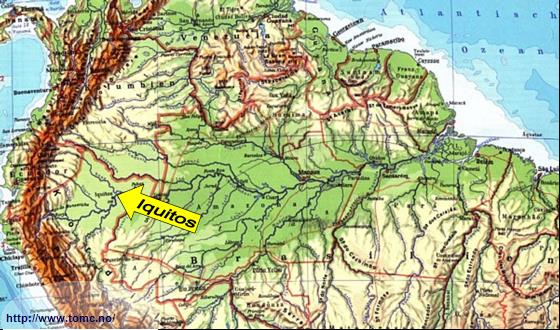
This map shows where
it's located, in the
Peruvian Amazon:
A closer look at the eastern surroundings of Iquitos: (click the map to enlarge)
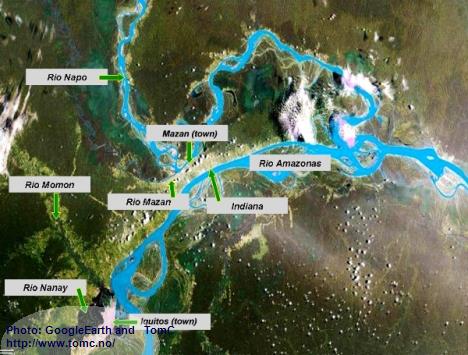
In order to save a lot of time and money,
we planned to go from Iquitos to Indiana by
boat, and try to find a way to cross
overland from Indiana to the town of Mazán.
The alternative would take much more time
and would be expensive: going by a rented boat
all the way to the mouth of Río Napo, and
to Mazán by following the lower Río Napo.
From Mazán, we would hire a small boat
(Pecci-pecci) with a driver, and go
upstream the Río Mazán.
I had hired two fishermen from Iquitos to follow and help me on this trip. In addition, they brought a young
"trainee", and I also asked my friend Luis to join us, he is a student and speaks some English.
Going to Mazán
Off we went: First to the harbor outside Iquitos called Bellavista de Nanay, very early in the morning.
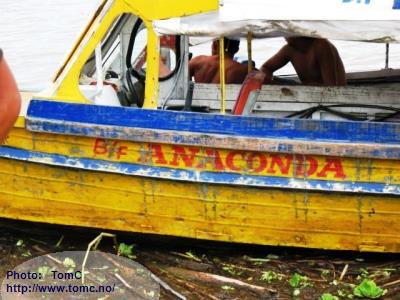
There we entered a boat with an exciting name:
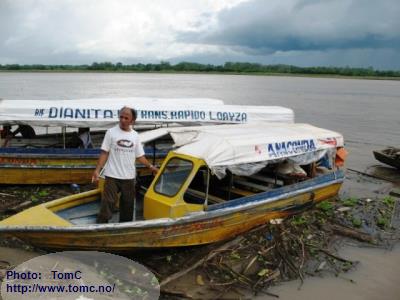
In this boat we had 16 passengers, the baggage
for everyone, some chickens, the driver and
his 2 assistants!
Heavy rain was following us, but we finally reached Indiana.
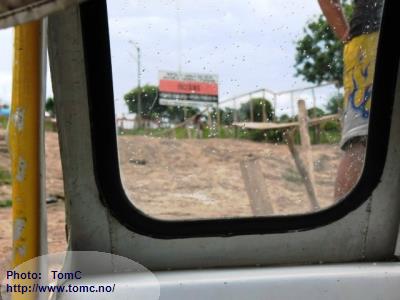
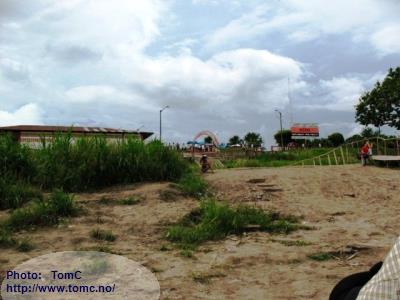
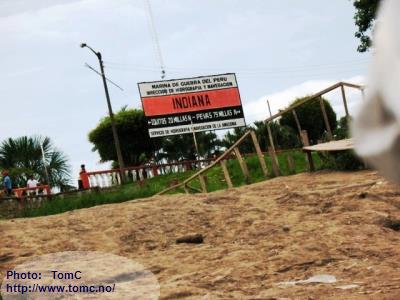

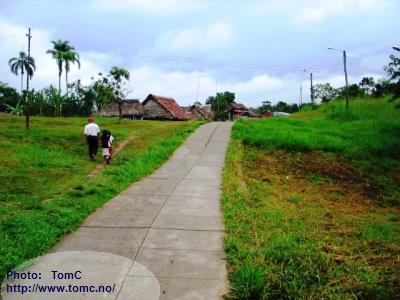
We were happy to learn that there is a
new, narrow, concrete road from Indiana
to the town of Mazán.
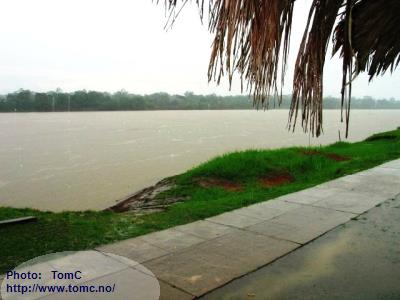
Soon we spotted the huge Río Napo.
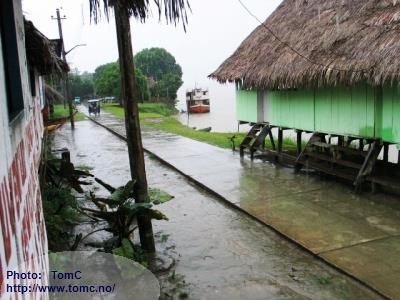
Here we arrive in Mazán, in motor-bike-taxis,
in heavy rain.
The green house would be our home the first day and night.
Mazán town
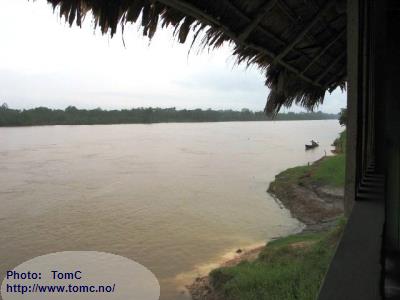
From inside the house, looking to the right, the Río Napo is heading for its mouth. (See map above).
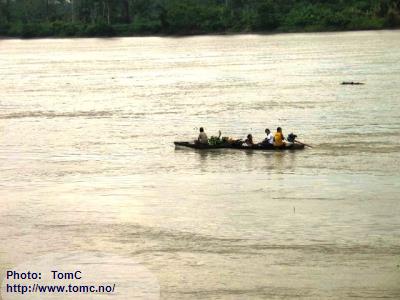
Straight ahead: Local life at the Río Napo
And looking to the left, I could see the mouth of the Río Mazán, the home of the true Apistogramma cruzi!
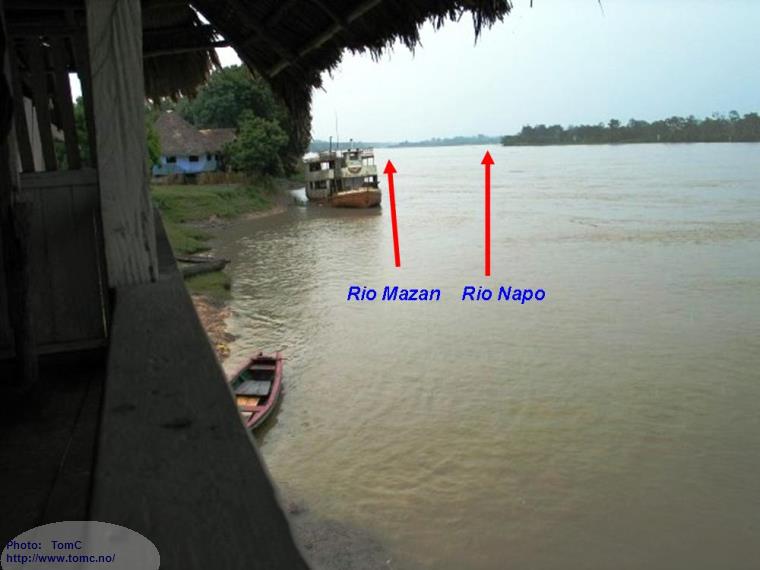
The fishermen were, as usual, hungry, and we took a walk to the center of the town of Mazán:
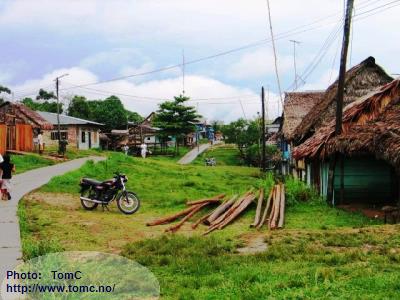
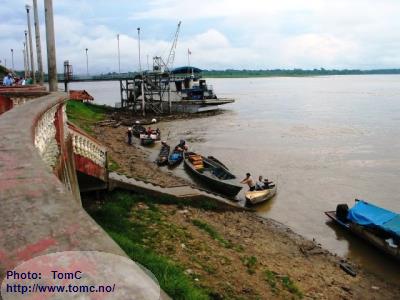
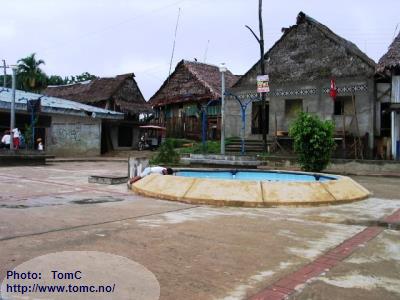
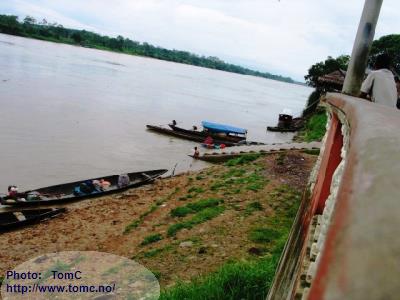
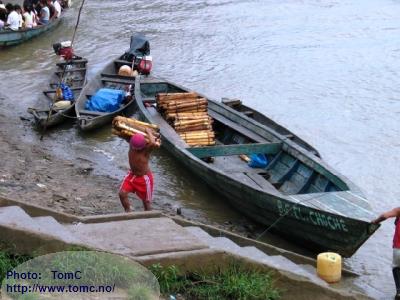
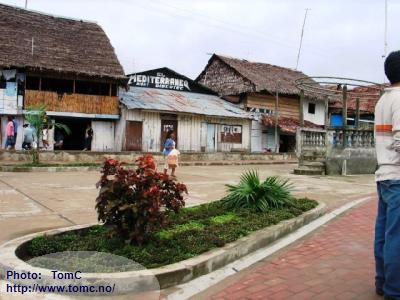
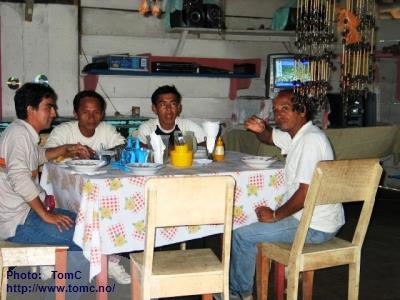
and the fishermen finally got their late lunch.
Since Kullander described one of the locations where he found A. cruzi in 1984, as: "
...... nearly 2 hours upstream from Puerto Alegre .....", we asked a lot of people where to find this
Puerto Alegre. Most people didn't know anything about it, but some said they knew, and pointed up the Río Mazán!
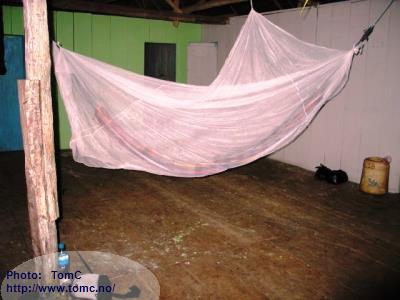
Back in "our" house, I arranged my hammock,
of course with a mosquito net.
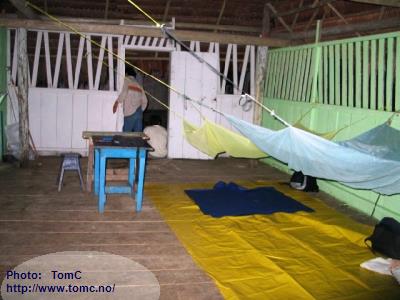
The fishermen prepared to sleep on plastic and
tiny blankets on the floor, with mosquito nets
covering them.
By the time we prepared ourselves for the next day's trip, rented a small boat (pecci-pecci) with a driver,
rented a small engine for the boat, and bought gasoline and food for the trip, it was evening.
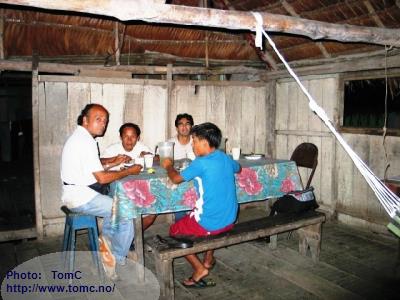
Surprise, surprise!
The fishermen were expecting dinner
.....and they got it:
After some more preparations, we went to sleep...and I had sweet dreams about the true Apistogramma cruzi....
Upstream the Río Mazán
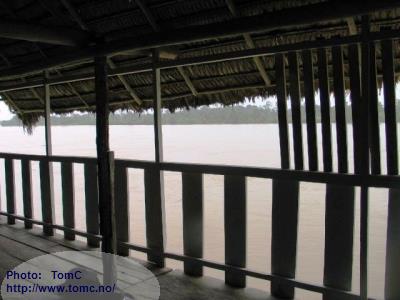
Next morning, when I woke up at 5:00 a.m.,
I could rest my eyes on the Río Napo from my hammock:
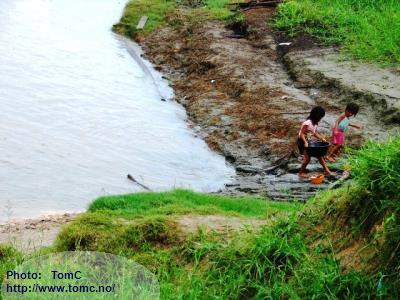
No matter how early I was up, the women
were earlier (washing clothes).
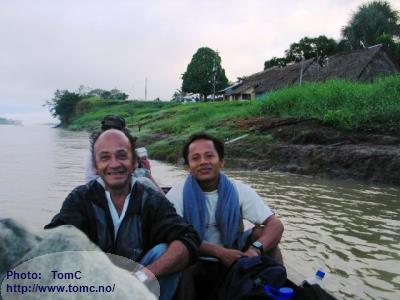
At 6:00 a.m., in a "pecci-pecci" (small boat),
we were heading for Río Mazán and ......
maybe ....... the
true Apistogramma cruzi.
We now could see "our" house, and Mazán, from the "sea"side:
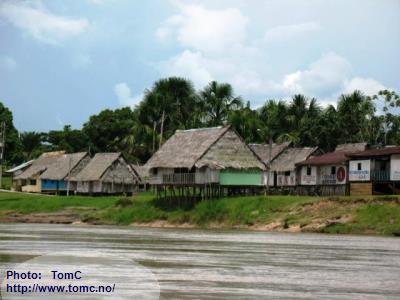
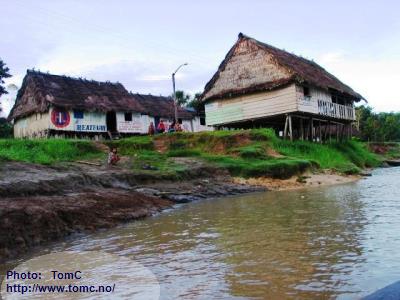
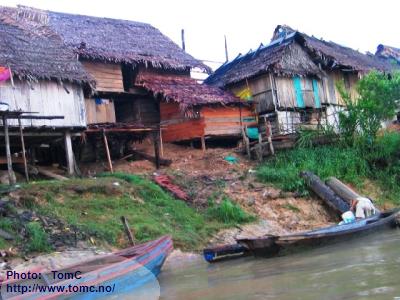
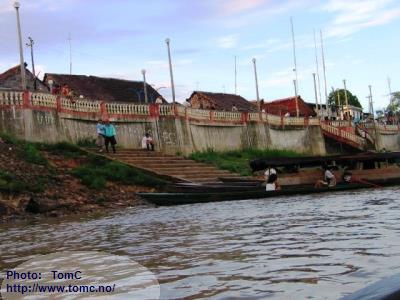
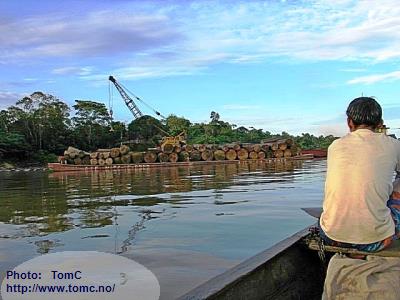
According to unofficial sources, more than 90% of the
timber taken out in Peru are illegal ...
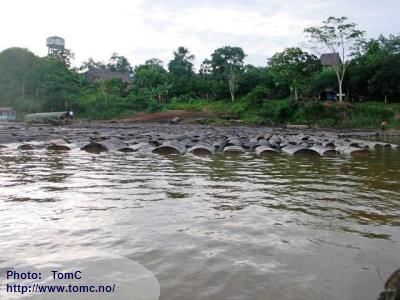
and there are lots of it.....
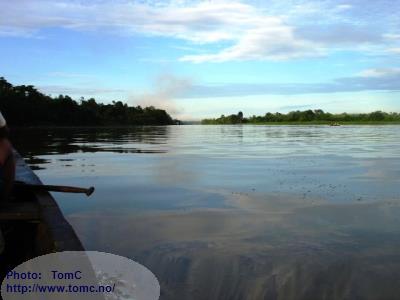
Getting closer. The mouth of Río Mazán
straight ahead, the main course of Río Napo
coming down from the right.
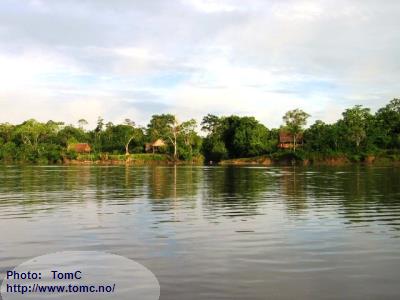
Entering the mouth of Río Mazán, we
stopped at every small community,
asking for Puerto Alegre.
We didn't get the response we were
hoping for...
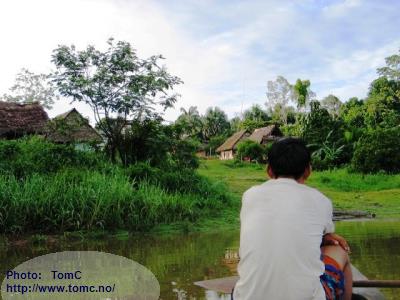
We stopped at this small cluster of houses:
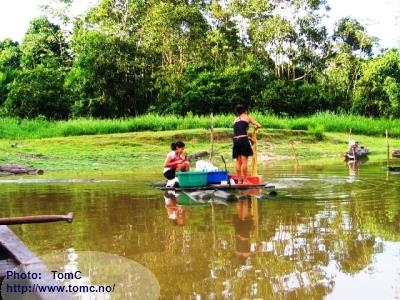
where these women where washing clothes
in the river.
They said: "Puerto Alegre, está aqui"
("It's here")!!!!!
Yes! We were on the right track!
We now knew that Kullander found the Río Mazán-holotype sample of A. cruzi nearly two hours upstream from here.
We had to assume that we could go at the same speed as Kullander did in 1984. Since the engine we had rented
for the boat looked as it was made a long time before 1984, we now were very optimistic!
Beautiful nature to look at going upstream on the Río Mazán:
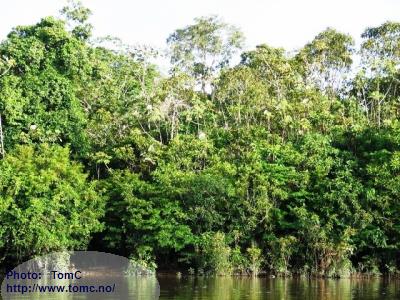
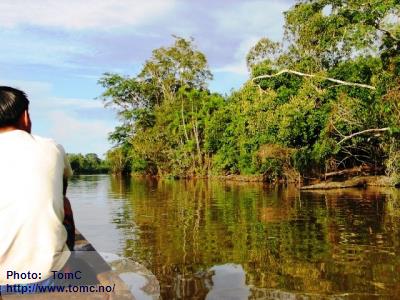
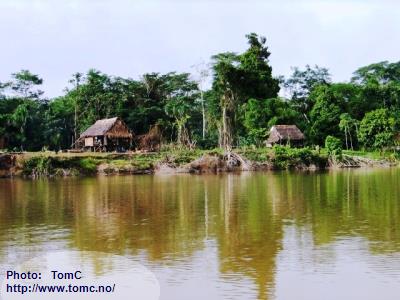
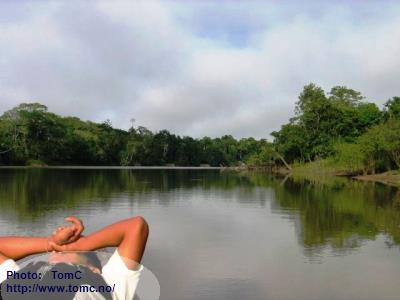
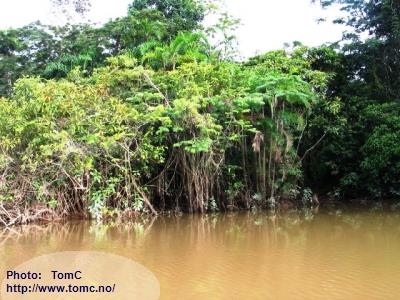
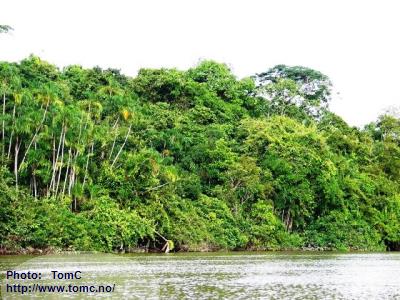
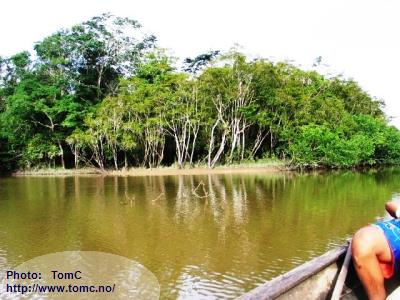
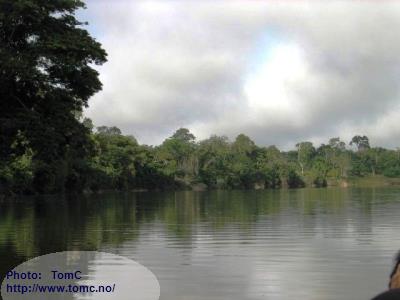
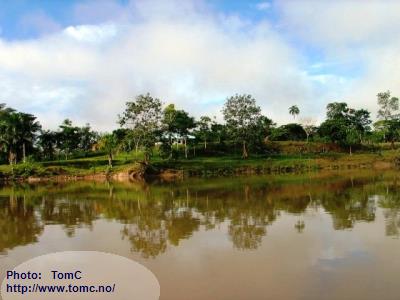
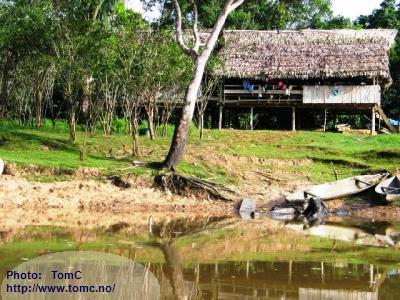
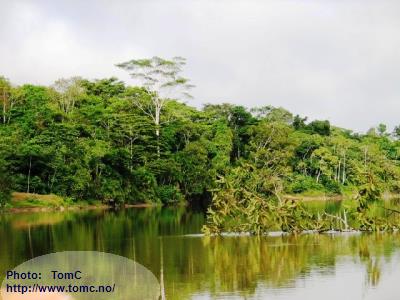
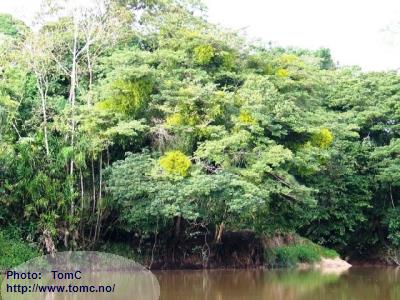
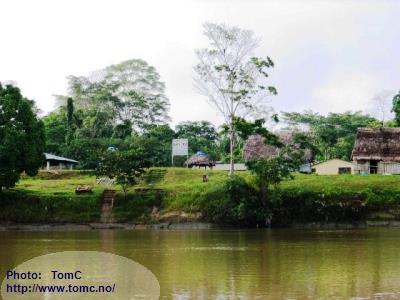
Apistogramma cruzi is named for
José Cruz Rodriguez, a highly skilled volunteer who helped Kullander
a lot on his trip to the Río Mazán in 1984.
When we passed this small village, we thought
it had a very promising name: Santa Cruz.
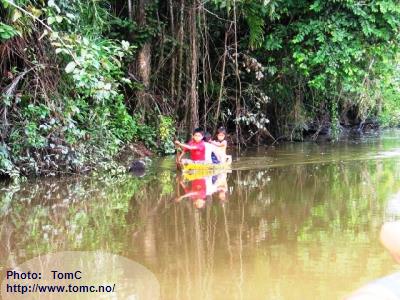
We also met some children on their way
to or from the school:
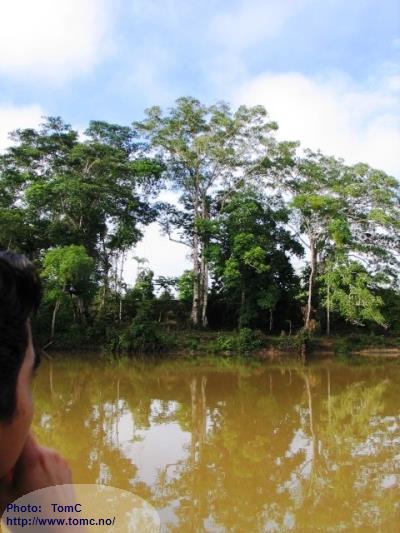
One and a half hours since we left Puerto Alegre, and
we started to look for small quebradas (creeks) in the jungle,
entering the Río Mazán.
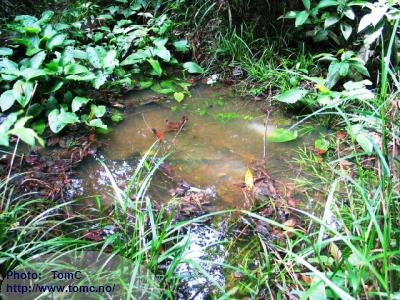
There wasn't much water to be found.
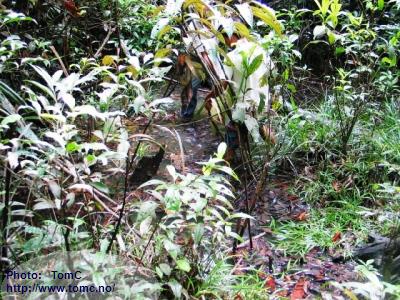
This was not permanent water, but just water from the small amounts of rain from the last few days.
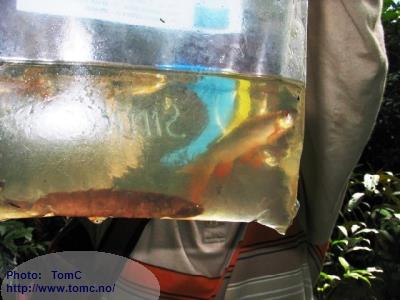
All we found were some knifefish (Gymnotus sp.)
and some of the usual red Copeina
which could
be found all over the area.
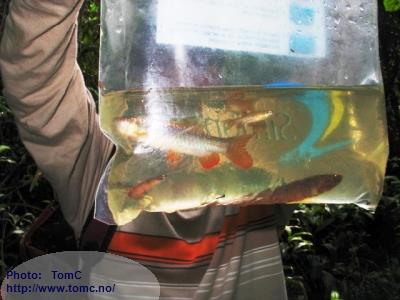
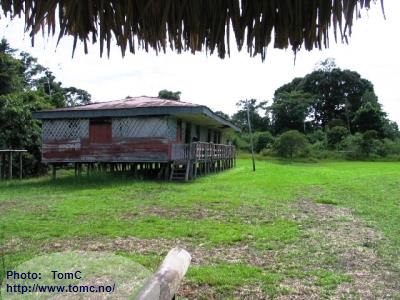
Before trying to find more fish, we had to
ask the governor of the area for permission
to collect fish
(if we found any).
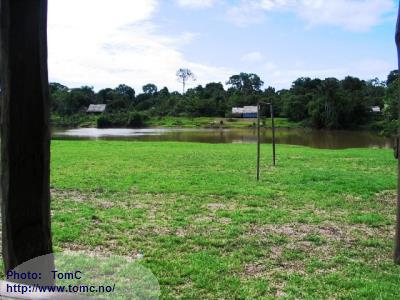
They remove most of the vegetation
around their houses because of the
very dangerous snakes in the area.
We entered the jungle at several places; all we found were some rest water. No signs of fish at all.
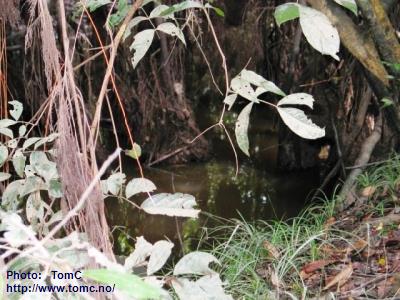
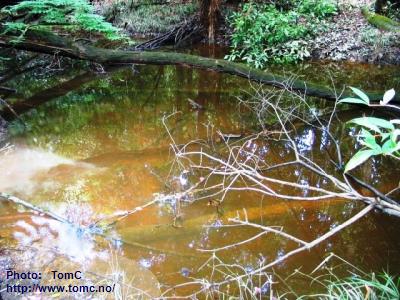
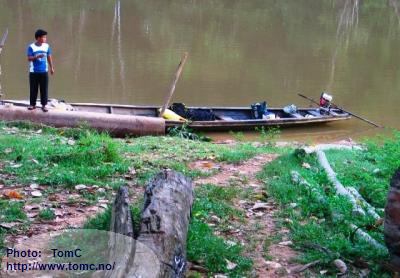
We made stops every place we possibly could meet some
people to ask if they knew of any quebradas with fish.
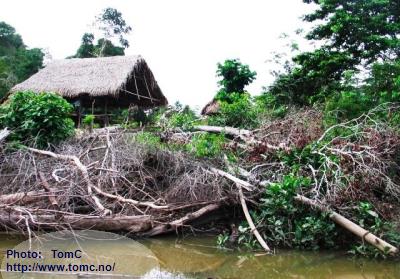
With help from local people, we found some rest water, but the search for fish in these waters produced
no results at all.
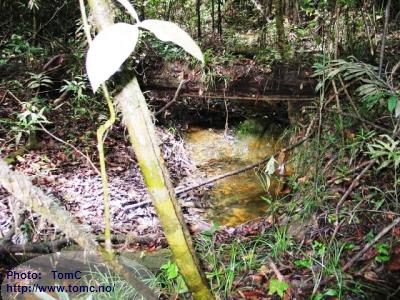
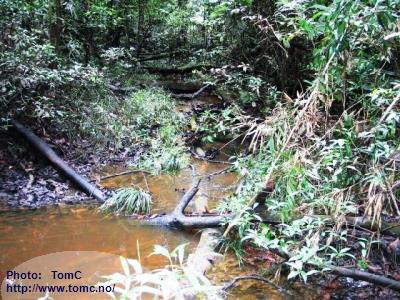
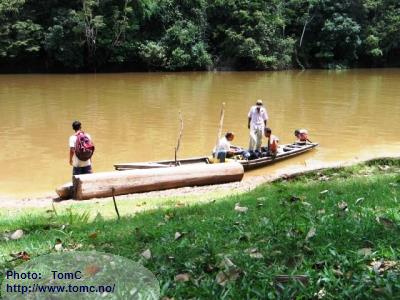
People in a small community told us that there
used to be several small streams with a lot of fish
in the nearby jungle, but due to the long period without
much rain, there wasn't much water. Still, they said
there were fish to be found.
We showed them pictures of Apistogramma cruzi,
and one of them told us that his father had collected a
similar looking fish, last year!
Could we believe that we were so close?
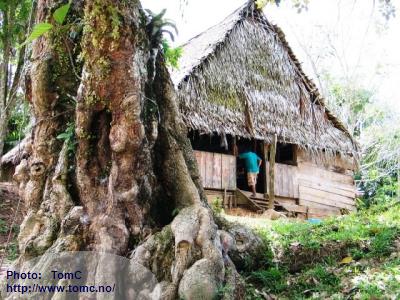
I decided to take a closer look in these areas, and asked
if we could spend the day and following night here.
As the people in the jungle usually do, they invited us to
stay as long as we wanted.
Success or failure?
We started to search the jungle.
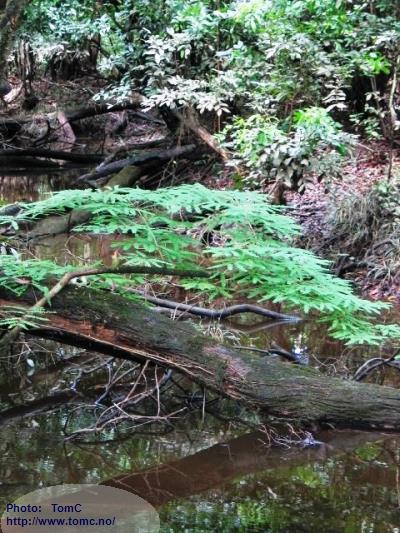
Although there wasn't much water in them,
we used our eyes and nets in every small
stream we could find, and
we found many!
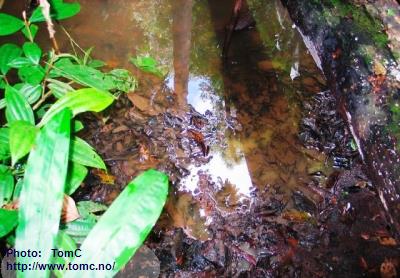
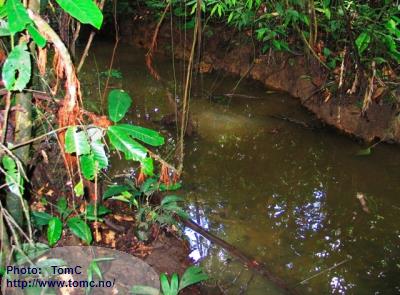
No fish were found, except a few small
killifish (Rivulus spp.).
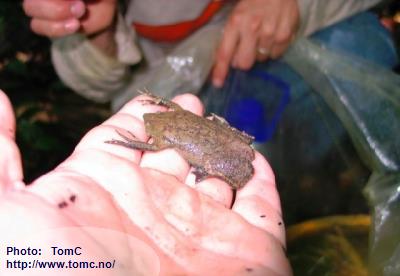
After a couple of hours in the jungle, all
we had found were some Rivulus spp. and
this frog of the
genus Pipa.
I considered giving up, but then we met some local people who told us that there were some more streams
with water in them not very far away!
So we continued......
Insects were biting me all over my body, the ground was very slippery, the temperature was 35°C
(95°F), the humidity was sky high, and I was tired....after a while I ran out of drinking water...
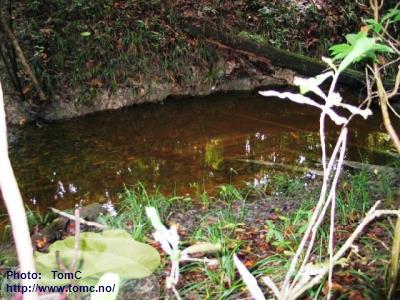
After almost 3 hours, we came to this stream.
As usual we tried our nets along the shores.
Nothing......
Third attempt with the net: we got fish! Not just any fish: two small Apistogramma!
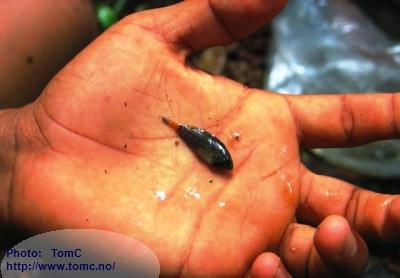
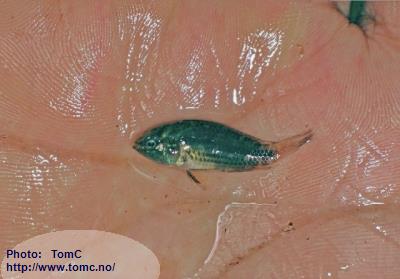
They were both females, but had some promising abdominal stripes that consisted of spots, and the stripes went far
back towards the caudal fin! Maybe A. cruzi?
We used our nets again and again; for several hundred meters, every part of the small stream that still had water
in it was examined: no more fish were found.
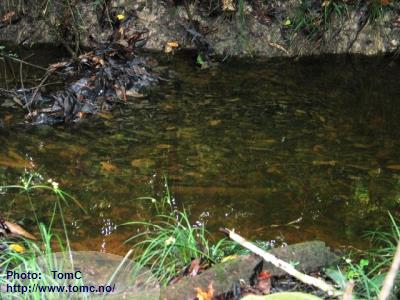
We moved on, found several other streams,
but no more fish...
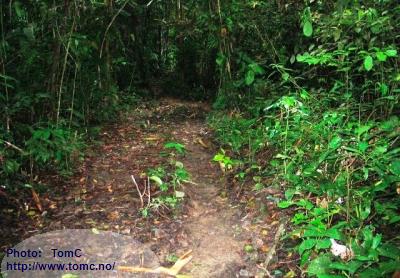
After 4 hours I was giving up.
After what some locals had told us, there
was only one more quebrada left,
further down.
I sat down, disappointed and tired.
I asked the fishermen to go and have a
look a little bit further down,
just to see
if the last quebrada was there, and if there were fish in it.
I would wait where I sat. I was expecting nothing.
After 30 minutes, a fisherman came back, with a smile all over his face!
I had to come and have a look at the last quebrada. I got to my feet and we left, fast ...
After 15 minutes, I looked at this:
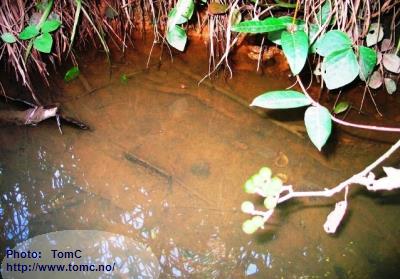
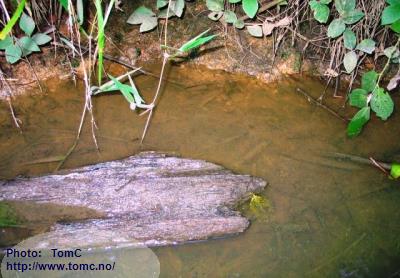
and further down there was a clearing in the jungle, where we could see the sun for the first time in many hours:
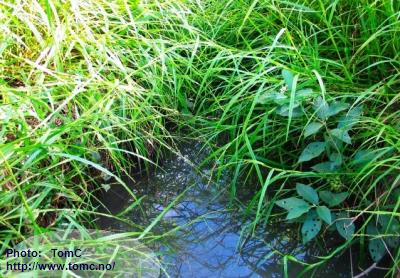
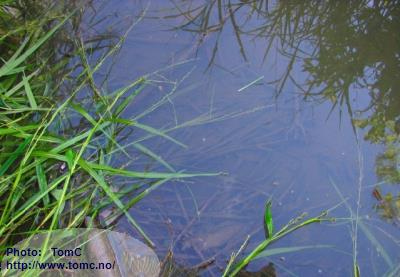
I tested the water: pH: 6,71 Conductivity:
91 µSiemens/cm T: 28,4 °C
We used our nets and we got almost 50 fish, obviously Apistogramma! Yesss!
My heart was beating like a hammer, but I only had time for a quick look at the fish, then the fishermen told me
that we had to run back immediately to reach the house before it was completely dark.
After more than 2 hours of very fast walking ( I was running almost all the time), we reached the house, just
as darkness came.
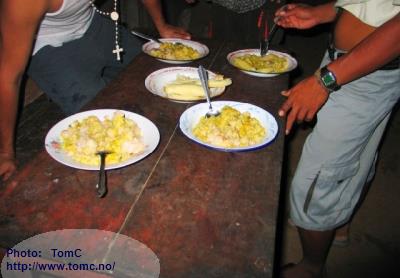
The fishermen were hungry, and our host had dinner
ready: bananas and rice.
I didn't have time to eat much, I just had to examine and photograph the fish!
What a beauty!
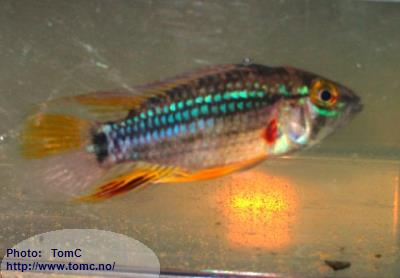
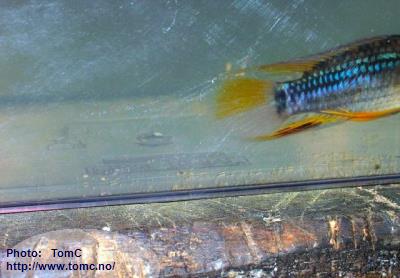
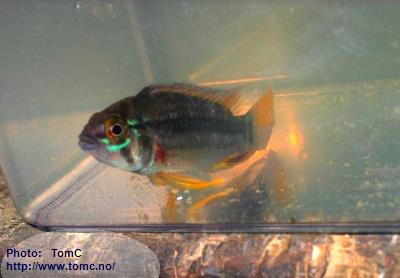
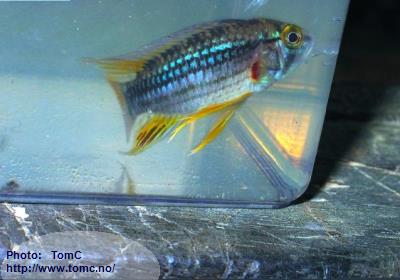
Bicolored caudal fin, abdominal stripes all the way back to the caudal peduncle, an A. cruzi-like caudal spot,
broad blue markings under the eyes, etc. etc.
We had found the true Apistogramma cruzi!
In my eyes a very, very beautiful fish! None of the local people, nor my fishermen, (nor anybody later on in Iquitos)
had ever seen this fish before.
I was happy again!
We went to bed, and guess who had sweet dreams........until something woke me up by pushing my "back", as I was
asleep in my hammock, in the living room in "our house".
Further upstream on the Río Mazán
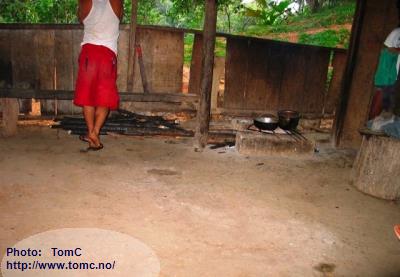
Next morning our host prepared the breakfast
(on the ground!)
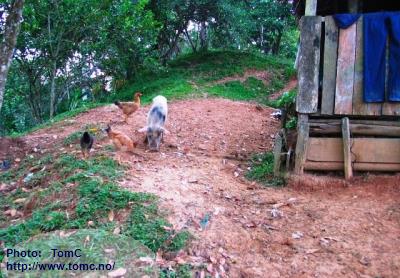
Our host chased these out, but they kept coming
inside the house all the time.
During the night, there was nobody to chase them out,
and it was the pig that woke me up by pushing my "back"!
As breakfast was prepared on the ground, I believe that
all these animals tasted the food before we got it.
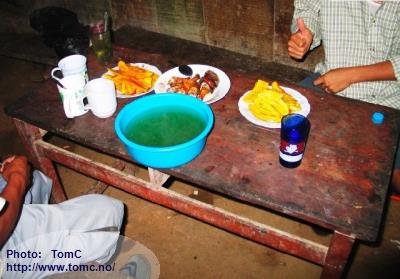
Breakfast is served.
Chicken, fried bananas and a lot of home
made tea (in the big turquoise plastic tub!)
After breakfast, we said goodbye to our hosts,
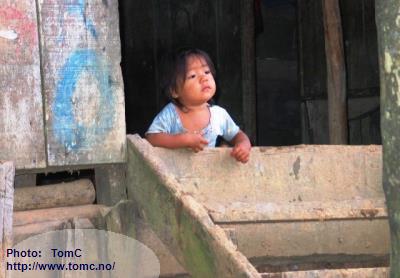
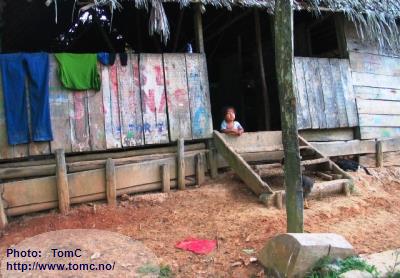
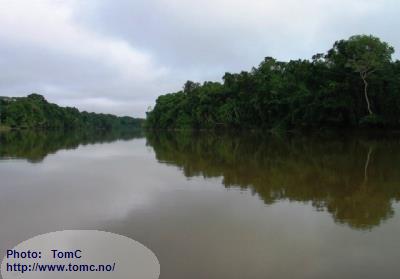
and headed further upstream the Río Mazán, to
search for other interesting fish.
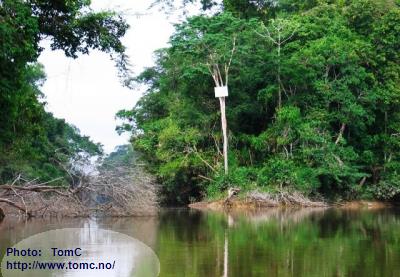
The notice on the tree said that all
exploitation of natural recourses in this
area is forbidden unless
permission is
given by the governor. Since we had
a such permission, we went on....
Wonderful nature:
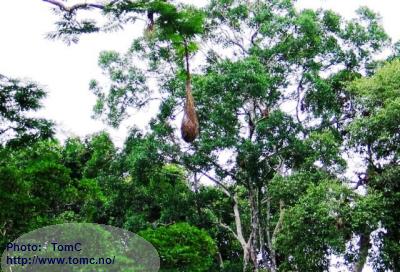
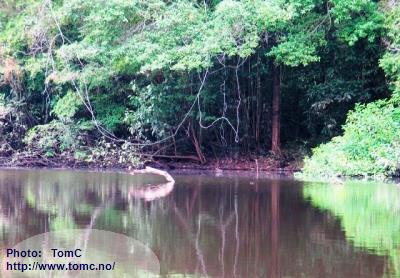
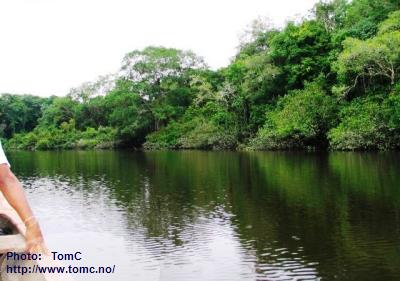
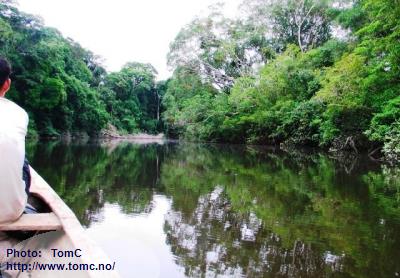
It's almost impossible to enter the jungle from the river when the vegetation is as dense as this:
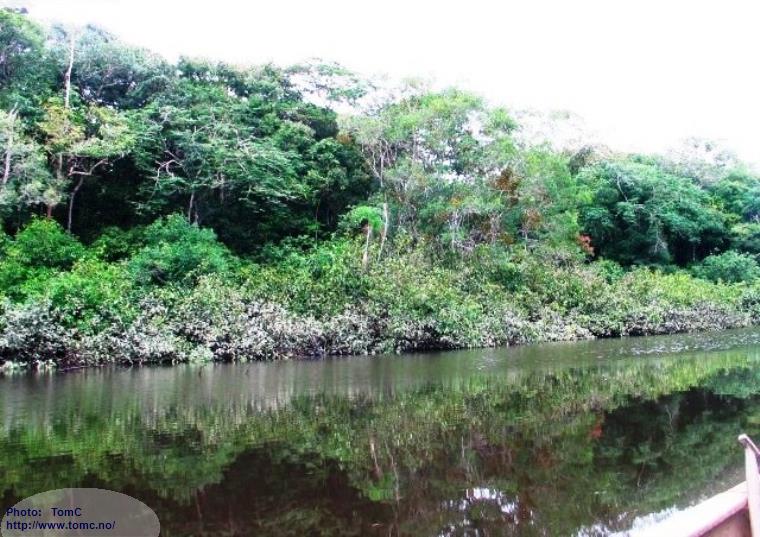
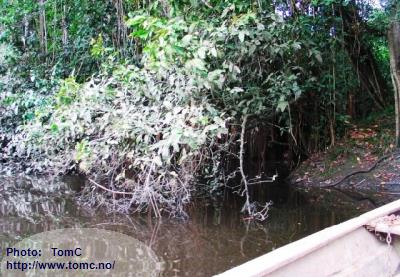
At last, we found some open areas where it was possible to enter the jungle.
We found a lot of residual pools.
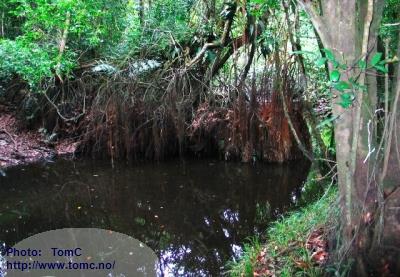
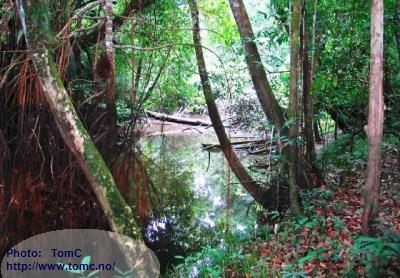
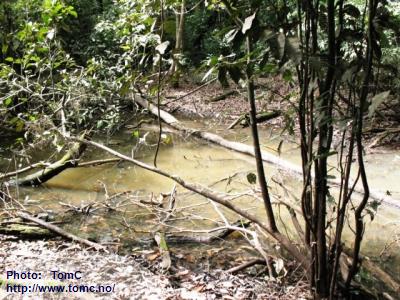
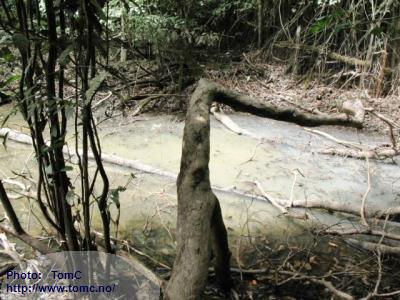
and constructions used by the locals when they are out hunting and fishing:
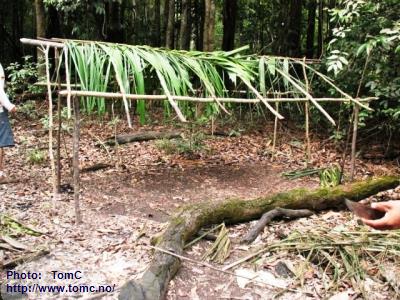
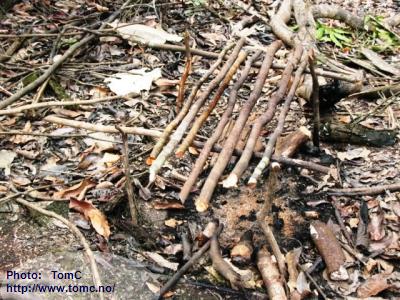
Here two of "my" fishermen are fishing in a pool:
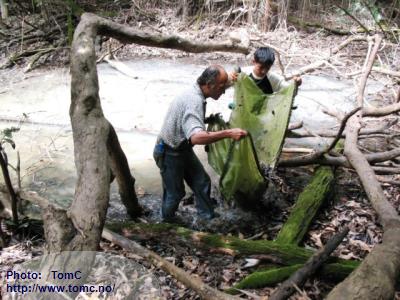
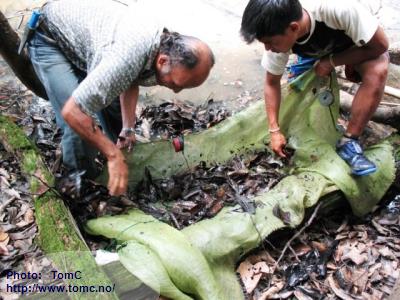
The jungle around us was very luxuriant:
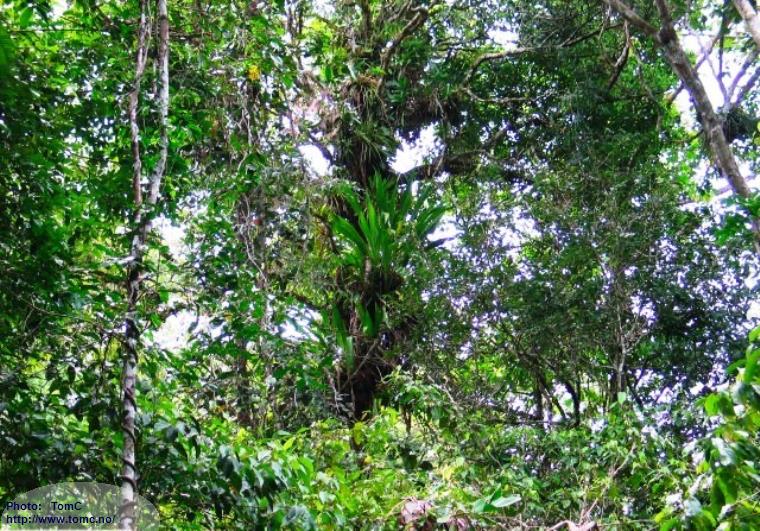
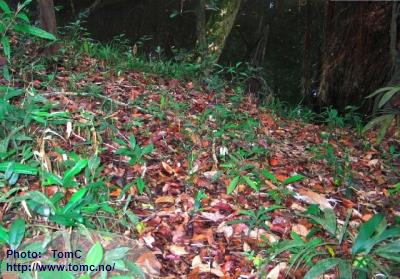
The ground, over and under water, was completely
covered with dead leaves:
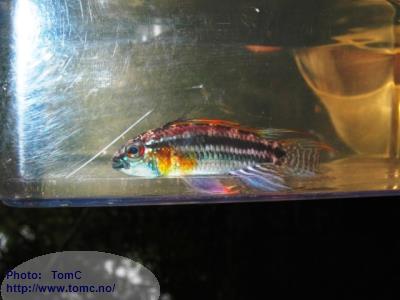
We found some wonderful Apistogramma bitaeniata:
and very surprisingly, Neon tetras (Paracheirodon innesi)! This species is not supposed to be here at all.........
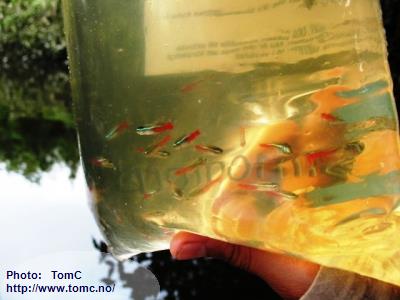
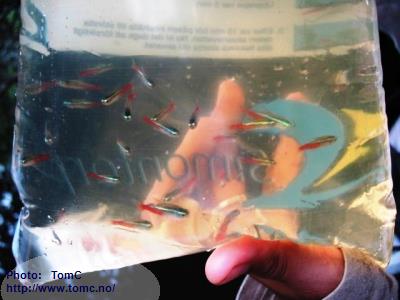
Some of the other fishes we found:
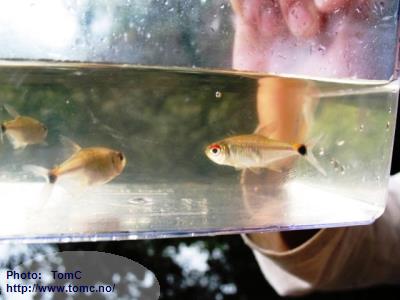
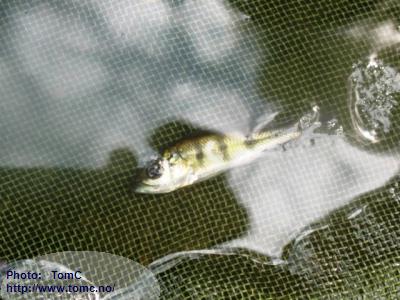
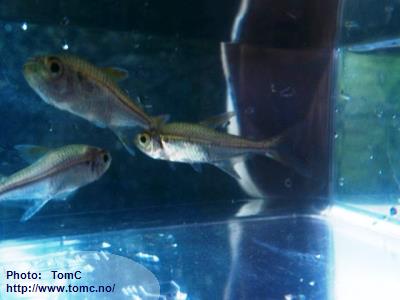
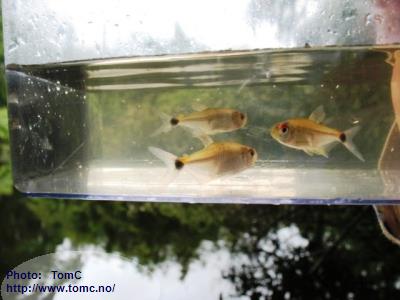
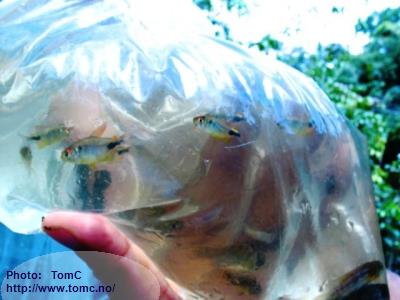
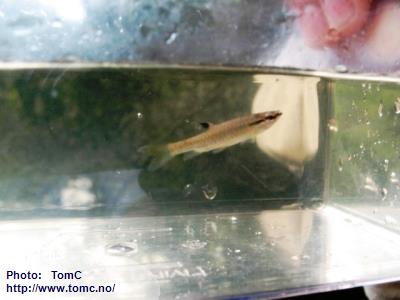
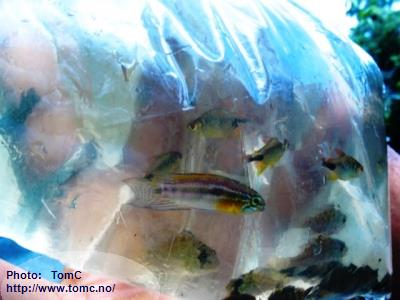
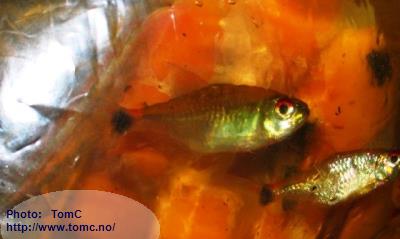
The Peruvian angelfish is a wonderful fish:
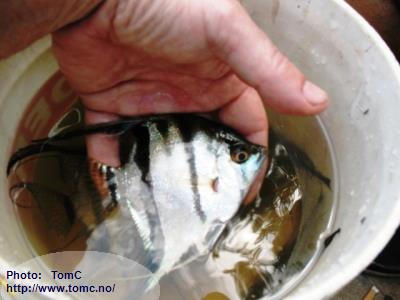
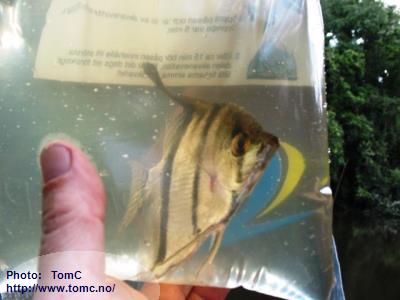
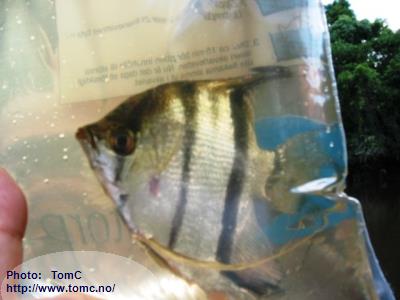
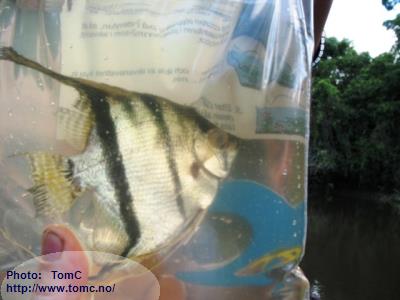
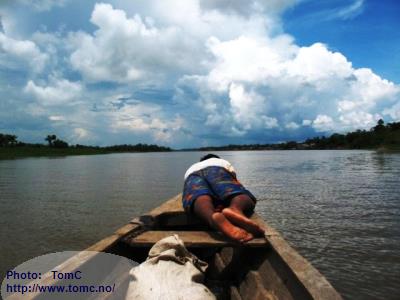
After some fish collecting, we turned our small boat
around, and headed for the town of Mazán again, going
downstream the Río Mazán.
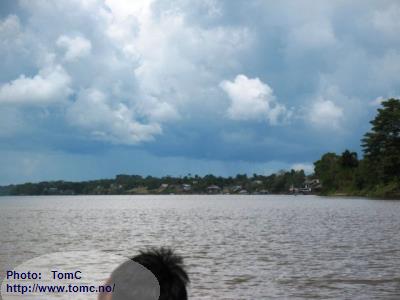
and after a few hours, we were "home"
in Mazán:
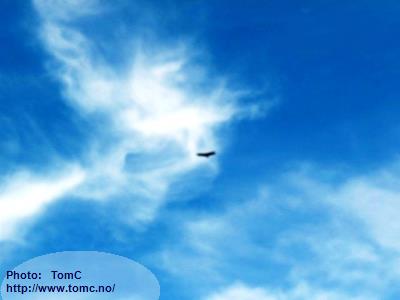
This huge bird of prey followed us for long
periods during the trip, and who knows, it
might have been this
one that brought us luck!
Back in Iquitos
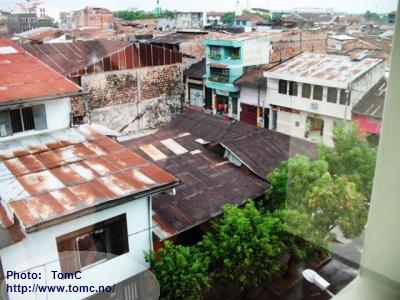
Quite a contrast, to be back in Iquitos and looking out of the hotel window:
I took more pictures of the Apistogramma cruzi from Río Mazán:
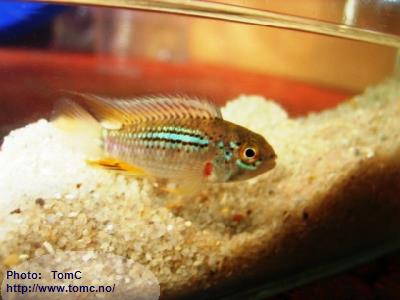
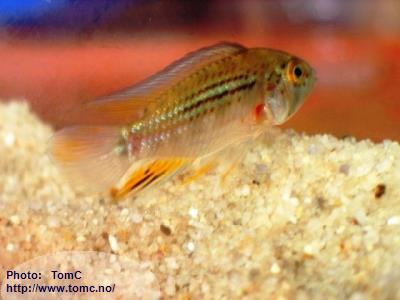
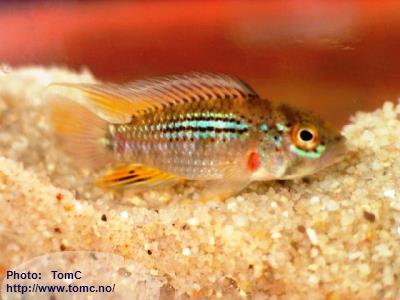
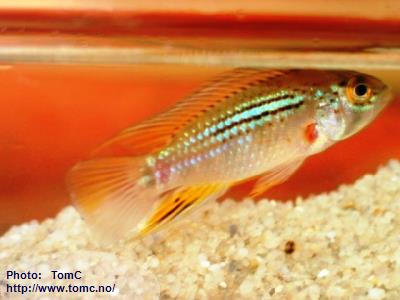
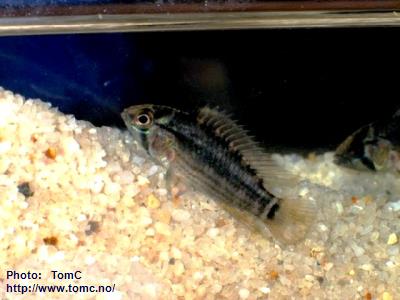
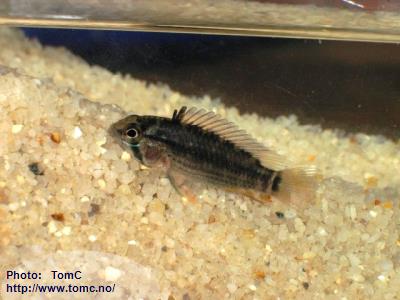
Back home
After having brought the fish back home to Norway, they didn't wait long before they started to breed:
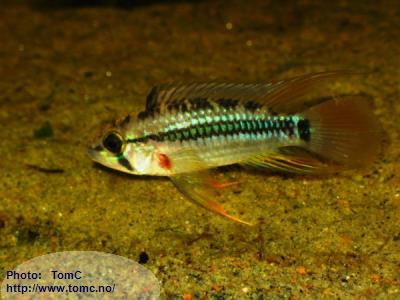
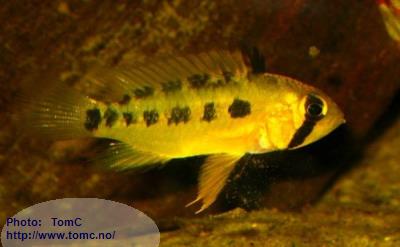
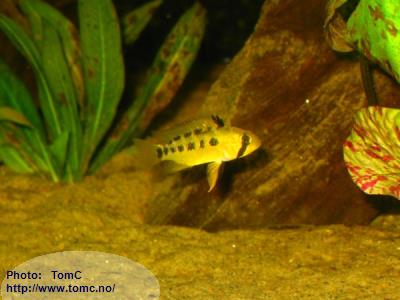
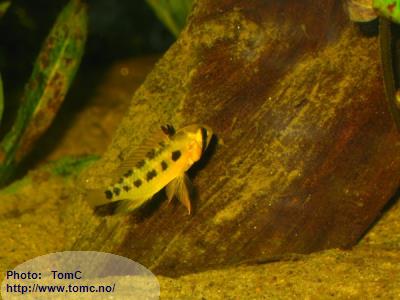
When the fry reached "youngster-size", I spread them to hobbyists who wanted them. So,
At last, I can assume that the true
Apistogramma cruzi is in the hobby!
|
|